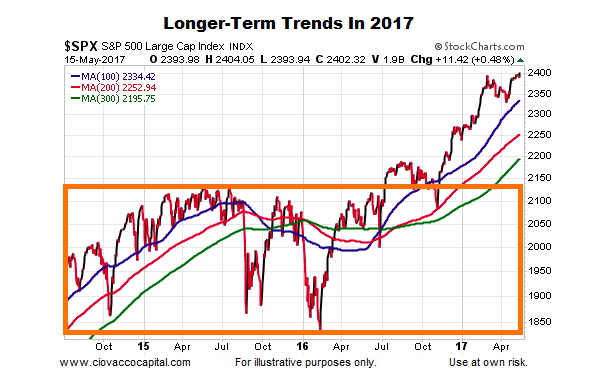It's not difficult to buy stocks. It's not difficult to locate companies which beat the market repeatedly. This is difficult for most people, and so you're seeking strategies for investing in stocks. The below strategies courtesy of Markets Herald will deliver tried-and-true rules and strategies for investing in the stock market.

1. In the front, be aware of your feelings
"Successful investment isn't based on the ability of an individual... the thing you require is the temperament necessary to control the urges of others which could lead them into financial trouble." This is the wisdom of Warren Buffett, chairman of Berkshire Hathaway and an oft-quoted investor sage and role model for investors seeking long-term, long-term, and market-beating returns.
Before we get started we'll give you a advice. We recommend not investing in greater than 10% in individual stocks. The remainder should be put into low-cost mutual funds that are diversified. The only way to save money for the future five years is to invest it in stocks. Buffett is a reference to investors who let their heads drive their decisions in investing, but not their hearts. The overactive trading that is triggered by emotions, is one of the ways investors harm their portfolio returns.
2. Do not pick ticker symbols, but businesses
It's easy to forget that in the alphabet soup of stock quotes that crawls across the bottom of each CNBC broadcast is an actual business. Stock picking shouldn't be an abstract notion. Remember: Buying a share of a company's stock makes you a part of the business.
"Remember that purchasing a share in a company's stock is the best way to become shareholder in the company."
You'll find an overwhelming quantity of information when you search for business partners. It's much easier to narrow down the details when you're wearing the "business buyers" cap. It is important to know how the company operates, where it is in the market and its main competitors, what its long-term prospects are and whether it can add value to the existing business.

3. To avoid panic, plan ahead
Investors are often enticed to alter their relationships to their stock. But, taking quick decisions in the heat of the moment can lead investors to make typical investing mistakes like buying high and selling low. This is where journaling comes in handy. Write down the factors that make each investment worth the risk of making a commitment. Once you've got the information you need, note down the circumstances that would justify splitting. Take this as an example.
What I'm buying: What do you find attractive about the company. Also, what potential future developments you can see. What are your expectations? What are the most important indicators and what milestones can be used to assess the company? Catalog the potential pitfalls and identify which of them are game-changing and which are signs of a setback that is temporary.
What could motivate me to sell? There are typically good reasons to sell. You can make an investment Prenup to explain the reason you're selling the stock. It's not about the fluctuation of prices and especially not in the short-term. However, we are talking about the fundamental changes that occur in the business that affect the company's ability to grow and its potential in the long run. Let's look at some scenarios: Your company loses a key client, the CEO shifts the business in a different direction, there is a major competitor, or your investment thesis does not work out within a reasonable amount of period of time.
4. Positions can be built gradually
The greatest asset an investor has is the ability to invest in time, not by timing. Investors who are most successful purchase stocks in hopes of be rewarded, whether it's through dividends or share price appreciation. over a period of time or even for decades. This means you could also be patient when buying. Here are three ways to reduce the chance of experiencing price fluctuation.
Dollar-cost average can be described as: Although this sounds complicated however, it's really not. Dollar-cost averaging involves investing a set amount of money over a set period of time, such as once per month or week. It purchases more shares during times of stock price decline and less shares in times that it rises, but it is also the same as the average price you will pay. Brokerage firms online permit investors to establish an automated investment plan.
Buy in Thirds: Like dollar-cost Averaging, "buying In Thirds" can help you avoid having the negative experience of getting bad results right away. Divide the amount you wish to purchase by three, and then pick three points to buy shares. These could be set up to happen on a regular basis (e.g. quarterly, monthly) or in response to corporate performance or other events. For instance, you could buy shares before a new product is launched and then put the next third of your funds in play if the product is an immediate success, or move the rest of the money elsewhere in the event that it isn't.
The "basket" It's tough to choose which company will prevail in the long run. Buy them all! The pressure of picking the "one" stock is relieved by purchasing a variety of stocks. You won't lose out on any player that passes the test of your analysis. You can use the profits from that winner as a hedge against losses. This strategy can also help you to pinpoint which one is "the is the one" and allow you to double your stake.
5. Avoid overactivity
The quality of your stock should be checked every quarter, at a minimum. It's not easy to keep track of your scoreboard. It can be dangerous to respond too fast to short-term events and to concentrate on the value of the company rather than share price.
Find out what caused the sudden price move in one of your stocks. Does your stock suffer collateral damage as a result? Have you noticed a change in the underlying business of the company? Is it something that meaningfully affects your long-term outlook?
The noise of the moment, like the blaring headlines and price fluctuations, is rarely relevant to the long-term performance. It's how investors react to the noise that really is important. This is the place where your investment journal, which is a calm voice that speaks to you during times of uncertainty, can help you stick it out through the inevitable ups and ups that come from investing in stocks.
